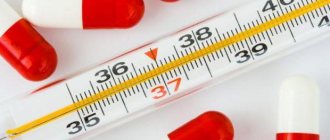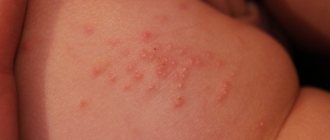Swelling of the nasal mucosa in a baby, according to many parents, is simply an unpleasant symptom that prevents the baby from breathing normally. This opinion is erroneous, because swelling is a serious and dangerous pathology, which in advanced cases can lead to deviations of both mental and physical nature. Swelling of tissues and mucous membranes is a protective mechanism of the child’s body against the ingress of microbes. It is thanks to this reaction that infection does not enter the respiratory tract. Regardless of the cause of the pathology, it should be eliminated as quickly as possible.
Causes and corresponding symptoms
Since the causes of edema can be very different, the symptoms of their manifestation differ from each other. Thus, the pathology itself can be provoked by:
- Sinusitis, in which swelling is observed not only on the bridge of the nose, but also on the wings of the sinuses and near the eyes. When pressing on swollen areas, the patient may feel increasing pain. The main reason for this is the accumulating pus inside the sinuses themselves.
- Rhinitis (in the acute form of an infectious lesion), in which the nasal cavity may become completely swollen. In this case, the patient himself experiences pain in the nose, excessive lacrimation, sneezing attacks, and an increase in body temperature. Lack of timely treatment can lead to the formation of boils and painful cracks.
- The presence of formations (benign or malignant). These can be either hollow cystic formations with internal liquid contents or tumors producing cancer cells. Often, in addition to swelling, the disease is accompanied by pain only in the later stages of development of the pathology (when the tumor increases in size and puts pressure on neighboring tissues and organs).
- One or more boils , which are the result of inflammation of the sebaceous glands or hair follicles. In such cases, timely surgical intervention is necessary. The presence of boils may be accompanied by itching and pain when pressed.
- Excessive acne in the nasal area, accompanied by itching and pain.
- The presence of numerous herpes rashes , characterized by painful tingling in the affected area.
- The entry of a foreign object into the nasal sinuses, which in turn causes the accumulation of purulent discharge and pain when pressing on the swelling itself.
- Inflammations around the eyes, for example styes, which if left untreated can cause swelling.
- Syphilis, which is dangerous due to the risk of destruction of the bone base of the nasal cavity, accompanied by painful inflammation.
- Rhinosinusitis, which is characterized by loss of smell, increased body temperature and the presence of mucopurulent discharge from the nose.
- The manifestation of an allergic reaction of the body to cosmetics, pollen, flowering, which is complemented by increased tearfulness, difficulty breathing and redness in the eye area. The presence of an allergy to anything from the environment is not accompanied by pain, which is its distinguishing characteristic when diagnosing the disorder itself.
- Anatomical features of the structure of the nasal sinuses and bridge of the nose, as well as possible previous injuries, such as bruises and fractures. Often occurs precisely after a blow to the bridge of the nose. In such cases, pain in the damaged area is often observed, as well as the inability to breathe properly.
- Impaired kidney function. In such cases, changes in the color and volume of urine excreted, pain in the lumbar region, and an increase in body temperature are typical. The patient himself may also complain of lack of appetite.
Swelling can be caused by uncontrolled use of vasoconstrictor nasal drops, hormonal dysfunction, disturbances in the cardiovascular system, and excessive consumption of alcoholic beverages.
Often, temporary swelling on the bridge of the nose is observed after rhinoplasty (plastic surgery to correct or restore the nose).
With this pathology, the patient may often complain of excessive dryness and burning in the nose and loss of sensitivity to smells.
Causes and symptoms of swelling of the nasal mucosa
Features of the development of swelling of the nasal mucosa in a child
Edema of the nasal mucosa is a swelling process that occurs due to a significant rush of blood. Often this process occurs against the background of inflammation.
The main function of the nasal mucosa is to protect against harmful bacteria that can enter the body with air, affecting the functioning of other organs. The appearance of swelling indicates that an active fight against infection is taking place. In addition, the cause of swelling may be mechanical damage to the nasal organ.
In most cases, the disease occurs precisely against the background of viral infections. In this case, an important factor influencing the appearance of edema is air temperature. Often, a pathological process occurs when the inhaled air is too cold. It not only negatively affects the condition of tissues, but also weakens the immune properties, making the body more susceptible to infection.
Another common cause of swelling of the nasal mucosa is allergies.
The body’s negative reaction to allergenic substances can be either year-round or seasonal. The most common groups of allergens: animal hair, pollen and fluff, household chemical products, medications. When an irritant enters the body, a sharp expansion of the blood vessels of the mucous membrane occurs, which is accompanied by copious secretion of mucus.
When the nasal organ is injured, swelling is a natural reaction of the body. When struck or otherwise mechanically applied to the nose, the integrity of the mucous membrane is disrupted. Vasodilation and strong blood flow in this case are associated with the activation of the body's defense systems.
Nasal congestion, clear mucus - a sign of swelling of the nasal mucosa
A common cause of swelling in children is the adenoids. With this disease, oxygen supply to the nasopharyngeal tonsils is disrupted. As a rule, the disease develops against the background of frequent colds, as well as due to low immunity and a lack of certain vitamins.
In general, it is necessary to be able to correctly determine the causes of the disease, since in this case it is much easier to figure out how to relieve swelling of the nasal mucosa in a child. To do this, you should also know the main symptoms of the disorder.
- Visual increase in mucosal tissue
- Labored breathing
- Feeling of nasal congestion
- Increased body temperature
- Headache
- Copious discharge of colorless mucus
- Inability to distinguish odors
- Feeling of dryness and burning in the nasal cavity
It should also be noted that if swelling occurs due to infection, a person may experience increased fatigue and a significantly weakened body. With prolonged swelling, purulent inflammation may appear, in which green or yellow mucus with an unpleasant odor is periodically released from the nasal passages.
Useful video - Nasal congestion: causes and consequences.
When allergic edema occurs, the patient experiences regular sneezing. In addition, swelling appears very quickly, almost immediately after contact with the irritant. In this case, the secreted liquid can be completely transparent. In addition, this disease is accompanied by a sore throat and itchy skin. In most cases, allergic swelling and its symptoms disappear fairly quickly after the allergen is removed.
Nasal swelling is a common ailment that can occur due to infection, allergies or traumatic exposure.
Drug treatment
Safe treatment of swelling of the nasal mucosa with medications
For most parents, the question of how to relieve swelling of the nasal mucosa in a child is very relevant. This is due, first of all, to the fact that there are many options for treatment, both medicinal and traditional.
A pediatrician will help determine the most optimal method of therapy, who will also be able to determine the exact cause of the disease.
Drug treatment can be carried out in the following ways:
- Vasoconstrictor drops. There are a number of drugs whose action is aimed at narrowing blood vessels, which in turn increases blood pressure and helps eliminate swelling. It is important to remember that such drugs can be used for no more than 5-7 days, since otherwise they can provoke the development of hypertension in the child. In addition, before taking it, you need to read the instructions and find out contraindications and possible side effects.
- Antiseptic drops. Swelling caused by respiratory diseases, as well as various types of infections, should be treated using antiseptic drugs. For nasal swelling, the best option is to take medications in the form of drops, as this allows you to enhance the local effect.
- Antibiotics. For viral and infectious diseases, the child may be prescribed antibiotics. This group of drugs is characterized by a strong effect on the body, but can provoke a number of adverse reactions. Treatment using such drugs is best done under the supervision of a specialist.
- Glucocorticosteroids. Medicines in this group are not recommended for use by children, however, in cases where other medicines do not help in treating edema, or there is a risk of complications, a specialist may prescribe a short course of treatment. As a rule, such preparations are produced in the form of sprays, which allow you to moisturize the tissues of the mucous membrane.
- Washing. To rinse the nose, you can use special products based on sea water or regular saline. The intake should be carried out in full accordance with the instructions, since, even despite their safe composition, rinsing liquids can negatively affect the child’s condition with prolonged and excessively frequent use.
- Inhalations. Carrying out procedures using a nebulizer is very useful for swelling of any origin. Inhalations have a complex effect on the respiratory system, which is very important for respiratory diseases. Procedures can be performed using essential oils and ordinary mineral water, as well as special liquids with medicinal components.
- Ointments. When treating nasal swelling in a child, ointments made from herbal ingredients are often used. When using this method of treatment, it is important to remember that a child’s skin is much more sensitive than that of adults, and therefore the procedure should be performed with caution.
- In rare cases, the cause of swelling can only be eliminated through surgery. These disorders include adenoids, which must be removed in order for the disease to go away. In addition, surgery may be prescribed in cases where the appearance of edema is caused by pathological neoplasms in the nasal cavity. Also, surgical intervention is often used in cases of severe nasal injuries in which breathing becomes impossible.
In general, there are a fairly large number of drug treatments for edema that can be used by both adults and children.
Traditional methods of treating edema
The best traditional medicine recipes
Speaking about how to relieve swelling of the nasal mucosa in a child, it is important to note that treatment can be carried out not only with the help of medications, but also with the use of non-traditional methods.
The advantage of traditional medicine is that many of its methods are quite safe and therefore can be used to treat children.
The best folk remedies against edema:
- Iodine solution. Using this liquid, the affected areas of the nasal organ are washed. Most often, the solution is used for diseases caused by bacteria. To prepare, you need to add 1-2 drops of iodine to 1 glass of warm boiled water. When rinsing, it is very important that the liquid does not get into the child’s throat, as he may accidentally swallow it.
- Inhalations. To carry out steam procedures, it is not necessary to use a nebulizer. Treatment can be carried out using essential oils, which must be added to boiling water. For one inhalation, a few drops of pine tree oils are enough. The procedure should be repeated several times a day.
- Inhalations with potatoes. Steam procedures with boiled potatoes are one of the most effective folk remedies against otolaryngological diseases. It is necessary to boil several potatoes in their skins, drain the water and breathe in the vapors emanating from the potatoes, while covering yourself with a towel. The procedure should be repeated 2 times a day for 3-5 minutes.
- Onion juice. To prepare a remedy for nasal edema, you need to grate one large onion. Next, you need to take three teaspoons of the resulting gruel and mix it with 200 ml of boiled water. It is also recommended to add one spoon of honey. After the liquid has infused for 40-50 minutes, you need to instill 5 drops into each nasal passage.
- Aloe juice. To prepare the medicine, you need to select several lower leaves of the plant and carefully cut them off. After this, they need to be thoroughly washed and ground using a meat grinder. The resulting mass should be squeezed out using gauze, and the resulting juice should be instilled into each nostril, 3 drops. It is recommended to repeat the procedure 4-5 times a day.
- Honey. If you are not allergic to bee products, you can use an effective remedy for swelling. It is necessary to heat a small amount of honey and water in the same ratio, mix thoroughly and drop a few drops into the nose. Also, honey is recommended to be taken orally, as it has an antimicrobial effect and is effective in the treatment of viral diseases.
In general, in folk medicine there is a fairly large selection of methods for treating swelling of the nasal mucosa, which will certainly help get rid of the unpleasant symptoms of this disease.
At the moment, many are interested in how to relieve swelling of the nasal mucosa in a child, since such a disease can not only bring a lot of discomfort, but also provoke the development of complications. For treatment, you can use both medications and traditional medicine methods, but it is best to treat with those drugs that are approved by the attending physician.
Most patients are accustomed to the fact that an allergic rhinitis is accompanied by a severe runny nose, swelling of the mucous membrane, lacrimation and possible sneezing.
But in some cases, allergies and a number of severe pathologies manifest themselves only as complete congestion of the nasal sinuses without sputum production .
What to do and why such disorders occur in children can be found in the information provided.
Diagnostics
Only a correctly established cause of edema will allow the doctor to adequately assess the degree of development of the pathology and prescribe the most effective treatment. To do this, the specialist must examine the bridge of the nose and also refer the patient to:
- blood test (general and biochemistry);
- conducting allergy tests;
- conducting a nasal culture study;
- passing urine tests according to the method of Zimnitsky and Nechiporenko;
- tomography;
- ultrasound examination of the kidneys;
- rhinoscopy;
- radiography.
Only after receiving the examination results will the doctor be able to correctly diagnose the pathology and prescribe appropriate treatment. As a rule, additional tests can rule out the presence of more serious diseases. This is especially true for the presence of cancer, as well as disorders in the cardiovascular and renal systems.
Treatment methods
The selection of effective therapeutic methods directly depends on the reasons for which the swelling itself is observed. Before starting to take medications and perform procedures, the patient should consult with a traumatologist who can correctly assess the degree of damage to the soft tissues and the bone itself.
As a rule, painkillers and decongestants are additionally prescribed to the general treatment package. This will help alleviate the patient’s condition and speed up the recovery process.
In the presence of boils, rhinitis or sinusitis, swelling is relieved by taking special anti-inflammatory drugs in addition to antibiotics. In cases of diagnosing an allergic reaction of the body to irritating factors, Loratadine, Diazolin or Suprastin are considered to be effective drugs that relieve swelling.
To relieve swelling of the bridge of the nose due to herpes skin lesions, the doctor may recommend taking antiviral medications in combination with effective diuretics (improving kidney function) and anti-inflammatory drugs of herbal origin.
When treating barley, it would not be superfluous to rinse the nasal cavity with a solution of salt and clean water in the ratio of half a teaspoon of salt per 250 ml of liquid. If nasal swelling is a consequence of ARVI, the patient is prescribed vasoconstrictor nasal drops, for example, Naphthyzin, Otrivin or Noxprey.
Anatomical abnormalities in the structure of the nose can only be corrected surgically.
How to relieve swelling of the nasal mucosa in a child
It is important for a child to choose the safest and most effective remedy to alleviate the condition and quickly get rid of the pathology. Modern medicine has different groups of drugs that can quickly relieve swelling.
Nasal drops
Before determining how to relieve swelling of the nasopharynx in a child, the doctor finds out the cause of the symptom. If this is an allergic reaction, antihistamines are prescribed in the form of drops or spray. If the edema is infectious, vasoconstrictor nasal drops are prescribed, which have an anti-edematous effect on the body.
The drugs have a quick effect: already in the first minutes there is a decrease in swelling, congestion and the volume of mucous exudate produced. Despite this advantage, they are not able to eliminate the source of edema, and if the dosage is systematically exceeded, they will cause side effects: dryness, burning of mucous membranes, sneezing, increased blood pressure.

Many experts recommend treating nasal swelling and runny nose in a child with such remedies only at night. This method of therapy is prescribed for a period of no more than 7 days. Among the representatives:
- Naphthyzin;
- Sanorin;
- Xylene;
- Rhinostop;
- Tizin Xylo.
Other drugs in nasal form used to treat swelling of the nasal mucosa are moisturizers, which include sea water. Such products moisturize the mucous membrane, help thin the mucus and prevent it from drying out. This could be Rinostop, Aqualor, Aqua Maris spray.

Allergic rhinitis and the swelling caused by it require the use of antihistamines in local form. These are Histimet, Vibrocil, Cromosol. Antiseptic agents have an antimicrobial effect (Protargol, Sialor, etc.).
For swelling, you can prepare nasal drops yourself by mixing 0.5 teaspoons of salt and soda, adding 2 drops of iodine or 5 drops of aloe juice. The resulting product is instilled into each nostril, 1 drop three times a day.
Antibiotics
How to treat swelling in the nose without and with snot, if nasal medications do not bring the desired recovery? After confirming the infectious nature of the symptom, antibacterial drugs are prescribed. Of course, children tolerate such therapy more difficult than adults, but in some cases, with severe swelling, such medications cannot be avoided.
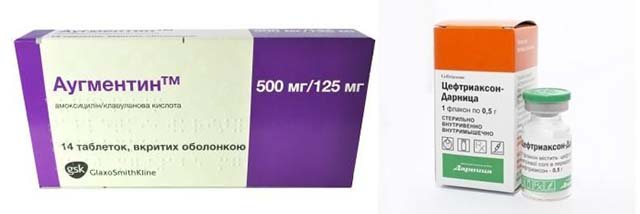
Strong drugs often cause side symptoms, and for this reason they should only be prescribed by the attending physician. The medications for swelling of the mucous membrane are the same as for adults, but in a lower dosage and for a short period. This could be Augmentin, Ceftriaxone, Cefodox.
Severe cases require placing the patient in a hospital setting and intramuscular injections with an antibiotic.
Glucocorticosteroids
Therapy for swelling, that is, swelling of the nasal mucosa in a child, can be carried out using glucocorticoid drugs based on hormonal substances. As a rule, they are prescribed for moderate or severe allergic rhinitis, which is characterized by swelling.
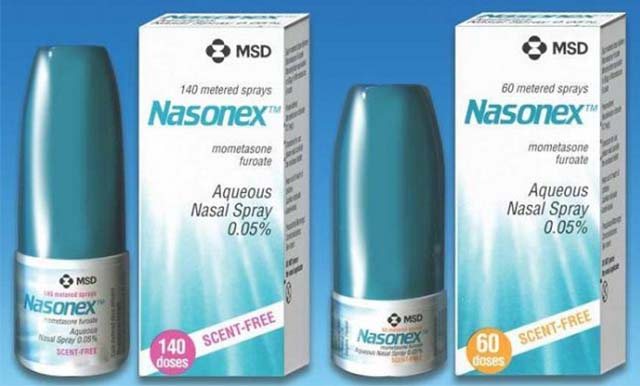
Medicines with this effect are taken on an ongoing basis if a person suffers from an allergic reaction. The effect of their use is observed several hours after the first dose.
The drugs include Nasonex spray, which has a wide spectrum of action.
Washing
Traditional methods of treatment are used along with the main therapy. So, at home, if there is swelling, you can rinse your nose with regular boiled water. Before the procedure, you need to blow your nose well. This washing allows you to soften the crusts and wash away the remaining mucous exudate.
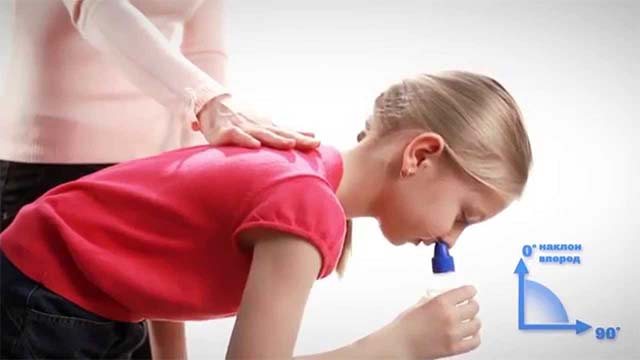
How to cure nasal swelling in a child at home, you can consult a doctor. Most experts are of the opinion that the most effective remedy for rinsing swelling is a ready-made saline solution, which can be purchased at any pharmacy. This inexpensive drug can be used every day.

You can use a solution of sea salt (in the finished product Aquamaris), which contains useful minerals that moisturize the nasal mucosa and speed up recovery. The drug has an antiseptic effect.
Inhalations
An ancient method is to inhale the vapors of freshly boiled potatoes. A more modern method is inhalation therapy (nebulizer) for swelling of the nasal mucosa in a child. Various medicinal compounds are poured into the device. This can be mineral water with an alkaline composition, saline solution.
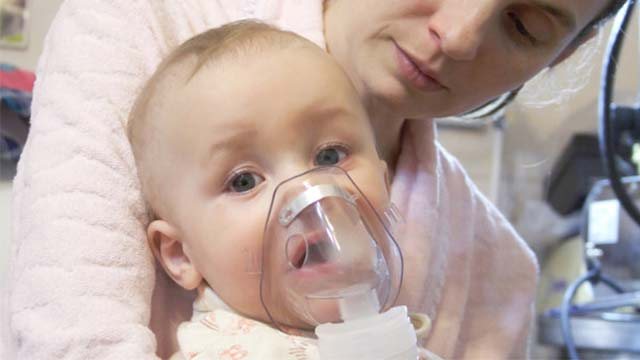
You can take any solution that has an anti-inflammatory or antibacterial effect.
Swelling of the bridge of the nose in a child
Observing swelling in a child is a good reason to immediately consult a doctor. Among the main reasons for the manifestation of pathology are:
- the appearance of recurrent pimples and acne in the sinus area;
- the formation of hollow cystic formations and inflammatory granulomas, in which swelling spreads to the cheek);
- disturbances in the functioning of the adenoids.
Swelling can also be the result of an injury or frostbite after a long walk outdoors in severe frost. An allergic reaction to flowering or pollen is also no exception when diagnosing the cause of swelling in a child. Timely assistance will help to avoid complications and quickly restore full breathing.
Possible treatment
The use of any pharmaceutical drugs and traditional medicine, as well as their permissible dosage, should be discussed in advance with the attending physician.
This also applies to special decongestant gels and ointments, which are not allowed for use by children under 14 years of age.
Acceptable therapeutic methods include:
- rinsing the nasal cavity with antiseptic drugs (2 Furacilin tablets per glass of cooled boiled water), which will prevent the development of infection;
- applying cold compresses (ice wrapped in a clean towel) to relieve pain in the area of the bruise;
- cosmetic cotton pads, which must first be soaked in hydrogen peroxide and folded into a tube, and then inserted into the nostrils to stop bleeding.
If there is vomiting, nausea and dizziness, the child needs emergency medical attention, so it is necessary to call an ambulance as soon as possible. Treatment of rhinitis should fully comply with the recommendations of the attending physician. Among antiallergenic drugs, a specialist may recommend taking Suprastin, Claritin or Tavegil. The little patient himself must also eat healthy food, take a complex of vitamins, and undergo mandatory hardening procedures.
Source: OtekoVed.ru
Treatment of nasal swelling in a child
The process of treating nasal swelling without a runny nose in a child requires an individual approach. An experienced doctor will be able to recognize the signs of the disease and prescribe the correct treatment regimen.
Drops for vasoconstriction
The latest generation of antihistamines are represented by nasal sprays and drops. Sialor Rhino copes well with nasal congestion in children of all ages. The function of the drug is to narrow the blood vessels in the nasal cavity.
Advantages of Sialor Rhino:
- fast and effective results,
- long duration of action (up to 12 hours),
- three dosage options,
- no cross-contamination (contamination of the product during production),
- convenient use.
The basis of the drug is oxymetazoline, a local-spectrum alpha-adrenergic stimulant. "Sialor Rhino" is administered intranasally. Within a few minutes, it reduces the level of swelling of the mucous membrane in the upper part of the respiratory tract. Thanks to the opening of the paranasal sinuses, the child feels noticeable relief of his condition.
Antiseptics and antibiotics
For respiratory diseases, nasal swelling is relieved with antiseptics. Such medications help reduce inflammation and restore healthy microflora. For convenience, we recommend choosing antiseptics in the form of drops.
The use of antibiotics occurs when the mucous membrane is swollen due to an infectious disease. They have a powerful effect on the child’s body, so treatment should be carried out exclusively under the supervision of a doctor. Additionally, you can use ointments based on eucalyptus, mint and pine needles.
Nasal rinsing
Nasal rinsing allows you to achieve the following results:
- removal of excess mucus,
- softening of the crust in the cavity,
- cleansing the mucous membrane,
- removal of dust and allergens,
- facilitating the breathing process,
- relieving inflammation.
The washing procedure is quick and uncomplicated. It is used not only for medicinal but also for hygienic purposes. Washing is carried out using saline solutions, sea water, and antiseptics. Duration of treatment is up to two weeks.
Physiotherapy
The following physiotherapeutic procedures help reduce swelling of the nasal mucosa in the absence of a runny nose in a child:
- Inhalations.
With warm inhalations, the baby inhales the sprayed medicine through the nose. At home, essential oils and herbal infusions are used. Steam penetrates into inflamed areas of tissue, eliminates pathogenic organisms and reduces the level of swelling. - Ultrasound therapy.
It is the effect of ultrasound on the nasal sinuses. Sessions last from 5 to 10 days. The procedure helps to dilate blood vessels, normalize blood flow and increase tissue regeneration. - Laser therapy.
An alternative treatment method in which the affected area is exposed to optical radiation. The duration of the course is from 5 to 12 days.
Surgical intervention
Surgical intervention is practiced in advanced cases - when drug treatment has failed. The operation is performed to remove the foreign body, eliminate growths and polyps, and remove inflamed adenoids. It is performed in a hospital under general or local anesthesia. The recovery period is from two to five days.
The mechanism of the appearance of swelling of the bridge of the nose
Edema is usually called the accumulation of fluid in soft tissues. This occurs when blood vessels are damaged or inflamed, which increases vascular permeability.
Only specialists can determine the mechanism of swelling of the bridge of the nose and the causes of the problem. In order to understand why the bridge of the nose swells and edema develops, it is necessary to take into account many different factors: from local pathology to disorders of internal organs and systems. Establishing the cause of swelling of the forehead of the bridge of the nose allows you to choose effective treatment.
Symptoms of the development of mucosal edema
Swelling in a child’s nose is easy to recognize; parents can determine it themselves without the help of a doctor. The main symptoms are:
- open or slightly open mouth during sleep;
- noisy snoring or snoring while resting, especially if the baby is lying on his back;
- a large amount of thick mucus that is difficult to suck out from the nasal passages;
- pronounced mouth breathing while awake.
If a child has a stuffy nose, walks in the cold season are strictly prohibited, because a baby who constantly breathes through his mouth can get pneumonia due to inhaling cold air.
Symptoms
Swelling of the bridge of the nose, like any other pathology, has its own symptoms. The specialist will assess the swelling, the general condition of the patient, and examine objective and subjective signs. The first ones are installed using physical methods and palpation. The latter are determined based on patient complaints. During the examination, the specialist must understand what contributed to the development of the disease and why the swelling of the bridge of the nose began.
Acute infectious rhinitis
A common reason why swelling of the bridge of the nose appears is inflammation of the mucous membrane. This happens in acute infectious rhinitis. The development of pathology is accompanied by other symptoms. In addition to the fact that swelling appears, when the secretions of the mucous membrane of the olfactory organ dry out, crusts appear, tightening the mucous membrane, and pain appears. Attempts to remove the crusts yourself leads to the appearance of wounds and the formation of a boil. Breathing through the nose becomes more difficult.
Therefore, when swelling appears on the bridge of the nose, you need to check the condition of the respiratory system. They are located close to the bridge of the nose, and inflammation in their cavity can cause severe swelling.
Rhinitis has the following symptoms:
- copious nasal discharge;
- difficulty breathing, decreased sense of smell;
- swelling of mucous tissue;
- swelling of the bridge of the nose;
- increase in body temperature.
In cases where a purulent process develops in the sinuses, fever appears. During sleep, a cough appears due to the accumulation of mucous secretions on the back wall of the throat. Edema rapidly develops due to increased vascular permeability.
Sinusitis
This pathology is one of the types of rhinitis. The disease is accompanied by nasal congestion and inflammation of the maxillary sinus, which leads to the development of edema. Most often, sinusitis occurs during the cold season.
Patients may experience pain on the bridge of the nose and severe swelling. This is a reaction of lymph accumulation. Pressing on the sinuses, tilting the head, or pressing on the bridge of the nose increases pain. The presence of these symptoms indicates the need to seek medical help. Doctors will help not only remove the swelling, but also eliminate its cause.
Furuncle
In some cases, patients notice that the inside of their nose is swollen when the hair follicles become inflamed and boils appear. The mucous tissue becomes dry, pain increases, and swelling develops.
This symptom accompanies the entire period of maturation of the abscess. After its breakthrough, the patient’s condition improves, the swelling goes away. The pathology is quite dangerous and requires medical supervision. Because ulcers can form not only on the surface of the skin, but also inside the nose: on the wings or near the nasal septum.
Severe acne
Changes in hormonal balance characteristic of adolescence are manifested by acne. This is due to dysfunction of the sebaceous glands. As a result of such changes, swelling of the bridge of the nose occurs.
This symptom also occurs in pregnant women. When the level of hormones in the body normalizes, the swelling of the bridge of the nose goes away on its own.
Herpes
Blisters on the lips are a familiar problem for many people. But herpes can appear on other parts of the body. So it is found on the mucous membrane of the nasal cavity and nostrils. Pathology occurs with colds and viral diseases.
Barley
Among the provoking factors that cause swelling, a common cause is stye. Purulent inflammation of the eyelash bulb causes swelling of the tissues and congestion of the nasal passages. At the beginning of the development of pathology, inflammation appears, causing an increase in the affected tissue. After ripening, the pus comes out.
Allergic reactions
If swelling occurs, you should first rule out allergies. Because among the common causes of this pathology, allergies are one of the most common.
With allergic reactions, lymph accumulation begins and, as a result, soft tissue swelling. A one-time contact with an allergen may not have external manifestations, but negative reactions develop in the future. Patients experience: tearing, itchy skin, sneezing, rash, swelling of the eyelids.
Source: OtekOff.ru
Causes
Swelling of the nasal mucosa is considered a protective reaction of the child’s body to external irritating factors. The nasal cavity contains many blood vessels. When harmful microorganisms enter them, increased blood circulation begins, which forms swelling of the mucous membrane. As a result, a barrier is formed that prevents viruses and bacteria from entering the respiratory tract .
The main factors that provoke nasal swelling include the following.
Dry air in the child's room
This phenomenon can provoke pathology, since in the first months of life a child’s nasal passages are narrower. When such air enters the nasal cavity, the mucous membrane dries out and swells.
This problem most often occurs in cold months, when the central heating in the apartment is in working order. The swelling that appears due to this factor occurs without a runny nose and manifests itself mainly in the morning. Read more about optimal humidity in an apartment here.
Teething
This process is physiological, and it is often accompanied by a stuffy nose in an infant.
Along with this, transparent mucous and salivary secretions appear. Edema occurs due to swelling of the gums, in which blood actively circulates through the vessels , and the oral and nasal cavities are closely interconnected with each other.
Allergy
A stuffy nose in an infant may occur due to the action of an allergen on the child's body. The causative agents of this pathology can be: household chemicals, plant pollen, dust particles, feathers, animal hair.
With allergic edema, the baby develops a runny nose, watery eyes, red eyes, and a dry cough. These symptoms appear upon direct contact with the allergen.
Formation of the nasopharyngeal mucosa
Swelling of the nose may occur in a newborn after childbirth, since in the first months of the baby’s life the mucous membrane continues to form, and the nasal passages are narrow because of this. The regulation of mucous secretions during this period is not stable (there is too much or little mucus), crusts appear in the nose.
Colds
During the period of acute respiratory viral infection, nasal breathing in a baby becomes difficult. Swelling is caused by bacterial or viral infections. If the cause of the disease is a virus, then in addition to worsening breathing, the temperature rises and the child suffers from headaches.
If a bacterial infection is added to a viral infection, the snot becomes thick with a yellow or green tint.
Pathologies of the nasal passages
Swelling of the nose can occur due to congenital pathologies and narrowing of the nasal passages. For example, nasal breathing may be difficult due to closure, fusion of the choana (exit from the nose into the nasopharynx).
Overheat
Infants are confirmed to be hypothermic or overheated, since the thermoregulation of the body has not yet been formed. A newborn who is dressed very warmly sweats a lot. This contributes to the drying out of the nasal mucosa and the development of swelling.
Inflammation of the adenoids
It is not so often that infants develop nasal congestion due to this pathology. Adenoiditis occurs with inflammation of the upper respiratory tract.
As a result, the nasopharyngeal tonsil (adenoid tissue) swells and hypertrophies. In addition to impaired free breathing, the child develops mucous discharge and snoring during sleep.
Sinusitis
Swelling in the nasal cavity may appear due to inflammation of the paranasal sinuses. Inflammation can form after suffering from influenza, ARVI, measles or sepsis. A newborn child has mucous discharge, often mixed with pus, impaired free breathing, and high body temperature.
Due to nasal swelling, a child may stop eating normally, which subsequently affects his weight. Due to congestion in the nasal passages, the child’s body does not receive enough oxygen, and hypoxia may develop.
Important! If nasal congestion in an infant does not go away for a long time, then a chronic form of the pathology may develop. The cause of nasal swelling must be determined by a specialist.
Causes and mechanisms
Edema is the accumulation of fluid in soft tissues, most often the subcutaneous tissue. This occurs due to increased vascular permeability, inflammatory changes or damage. And to understand what mechanisms and factors underlie this condition, you should consult a doctor. Only a specialist can adequately assess the likelihood of a particular cause. And they are different:
- Rhinosinusitis.
- Allergic reactions.
- Injuries.
- Kidney problems.
In addition, swelling of the bridge of the nose occurs after surgical interventions in the area of the external nose, forehead and orbit. In women, a similar reaction is possible when applying permanent eyebrow makeup (tattooing) or as a result of mesotherapy. It is also necessary to take into account the work of the endocrine and cardiovascular systems, because they have a direct impact on fluid exchange in tissues. We must not forget about such rather banal but common situations as overwork, prolonged work at the computer and lack of sleep, sunburn. This may well lead to swelling in the periorbital area and on the bridge of the nose.
The causes of swelling of the bridge of the nose can be different - from local pathology to disruptions in the functioning of other organs and systems.
Symptoms
Clinical examination helps to understand the origin of edema. Any pathological process occurring in the body has its own manifestations. Therefore, during the initial treatment, the doctor focuses his attention on subjective and objective signs. The first ones are established during a survey - from complaints and anamnesis (history) of the disease. At the same time, it is important to understand when the swelling began, what contributed to its appearance, and how the process developed before seeking medical help. Objective symptoms become clear based on the results of examination, palpation and other physical methods.
Rhinosinusitis
The first thing you should pay attention to is the condition of the ENT organs, primarily the nose and sinuses (maxillary, frontal). After all, they are located very close to the surface, and the inflammatory process in the cavities can cause reactive swelling (and even redness) on the skin. Rhinosinusitis most often manifests itself with the following symptoms:
- Difficulty in nasal breathing.
- Discharge from the nose (mucopurulent).
- Deterioration of sense of smell.
- Temperature increase.
Fever appears with acute rhinitis or purulent process in the sinuses. Inflammation of the nasal mucosa initially occurs with symptoms of dryness, “tickling” and sneezing. And then swelling with congestion occurs. Sinusitis may also be accompanied by a cough at night - this inflammatory exudate flows down the back wall of the throat and irritates sensitive receptors. If the acute process is not stopped in time, then it can become chronic.
Swelling of the bridge of the nose with rhinosinusitis is reactive in nature due to the expansion of the superficial vessels of the skin and an increase in their permeability.
Allergic reactions
The non-inflammatory process associated with the appearance of edema is primarily an allergy. It is characterized by an increase in the body's sensitization to certain substances (household, food, insect, plant, medicinal). The first contact with the allergen does not manifest itself in anything, but subsequent contacts develop immunopathological and pathophysiological reactions with clear clinical signs:
- Skin itching.
- Paroxysmal sneezing.
- Tears.
- Swelling of the eyelids.
- Rash (urticaria).
Severe allergic reactions are accompanied by Quincke's edema, bronchospasm with deterioration of breathing and anaphylactic shock. The latter is accompanied by a drop in blood pressure, dizziness, rapid heartbeat and fainting. Therefore, even local swelling in a child, for example, on the bridge of the nose, should be a reason to exclude an allergic component.
Injuries
Mechanical damage to tissue is another important cause of swelling. Not only adults, but also children are prone to facial injuries. These may just be bruises, but more serious situations involving fractures of the nasal bones cannot be ignored. The moment of injury is difficult to forget, because at this time sharp pain usually appears. Then swelling gradually increases, which often spreads from the bridge of the nose to the eyelids, forehead, and cheekbones. When the capillaries are damaged, a hematoma occurs, and abrasions are visible on the skin. Nasal fractures are accompanied by impaired nasal breathing, and deformation of bone and cartilaginous structures is determined.
Kidney problems
Another situation associated with swelling on the face is impaired renal function. This organ is designed to remove metabolic products (“waste”) and excess fluid from the body. But if the kidneys do not work correctly (for example, with chronic pyelo- or glomerulonephritis), then water begins to accumulate in the tissues. And first it happens on the face (after sleep). In addition, you can notice other signs of pathology:
- Changes in the volume of urine and its color (turbidity, redness).
- Pain in the lumbar region.
- Decreased appetite.
- Increased body temperature.
During examination, the doctor often reveals a positive Pasternatsky symptom (pain occurs when the palm is pressed on the lower back), paleness and dryness of the skin. Such symptoms cannot be ignored, because they indicate kidney failure, and its consequences are very serious.
Swelling of facial tissues can be a sign of disruption of the excretory system, especially the kidneys.
Causes of swelling of the nasal mucosa
Inflammatory processes in the nasal cavity and oropharynx occur in many diseases. The nasal mucosa and tonsils in the throat are the first to fight infectious agents. This is the “leading edge” of the body’s immune system’s fight against a large army of natural enemies of health. It's like an antivirus program on a computer. Only the immune system recognizes and fights not computer viruses, but real viruses, as well as bacteria, fungi, and protozoa.
Special cells bind and remove any particles that the immune system perceives as harmful or foreign. However, any program can fail, and the body’s defenses can make mistakes about who is “friend” and who is “enemy.” A confused immune system reacts to harmless dust mites, ubiquitous pet dander, pollen and certain foods. Swelling of the mucous membranes of the nasopharynx develops, a sore throat, lacrimation, and redness of the eyes appear.
Allergic rhinitis is 2–2.5 times more likely to develop in children who have inherited from their parents the ability to react strongly to ordinary substances. Medical statistics provide data on 10% of the population being susceptible to this disease. Even infants get sick, but the first symptoms usually appear after the child reaches 3 years of age. Complications of allergic rhinitis are recurrent respiratory diseases, rashes on the body, sinusitis. In severe cases, inflammation of the mucous membrane of the lower respiratory tract and bronchi begins, accompanied by shortness of breath and cough.
Additional diagnostics
The causes of swelling on the bridge of the nose will become clear only after a full examination. And it should include not only a medical examination, but also additional procedures. Using laboratory and instrumental methods, it is possible to establish the mechanisms of pathology and its source. Therefore, the patient may be prescribed the following studies:
- General blood and urine tests.
- Blood biochemistry (electrolytes, creatinine, urea, immunoglobulins).
- Urinalysis according to Nechiporenko and Zimnitsky.
- Allergy tests.
- Nasal swab (microscopy, culture).
- Rhinoscopy.
- X-ray or tomography of the nose and sinuses.
- Ultrasound of the kidneys.
Each disease has its own characteristic features, and identifying them is the main task at the diagnostic stage. When it becomes clear what you are dealing with, you can safely move on to therapeutic measures.
Treatment
How to treat swelling depends entirely on its cause. If you have been overworked or lack of sleep, and no signs of pathology have been identified, you just need to have a good rest and normalize your daily routine. Prolonged exposure to the sun requires the use of protective equipment (sunblock, glasses, hats). If a burn has already occurred, then it is necessary to lubricate the affected area of the skin with panthenol - this will reduce the symptoms and alleviate the condition.
Situations where a doctor has diagnosed a specific disease or injury require more active intervention. Most often we are talking about drug correction. The range of drugs used is determined by the type of pathology:
- Antibiotics and anti-inflammatory drugs – for rhinosinusitis.
- Antihistamines - for allergies.
- Decongestants and painkillers – for injuries.
Kidney diseases are treated comprehensively. The treatment regimen may include antimicrobial agents, herbal medicines, hormones, diuretics, antioxidants, vitamins and other medications. It is important to directly influence the cause and all links in the mechanism of pathology development. This is the only way to hope for a positive outcome of treatment and elimination of edema.
If swelling suddenly appears on the bridge of the nose in an adult or child, it is better not to hesitate, but to immediately consult a doctor. And although some reasons can be quite trivial, it is necessary to exclude more serious situations that require timely diagnosis and active treatment.
Source: elaxsir.ru



